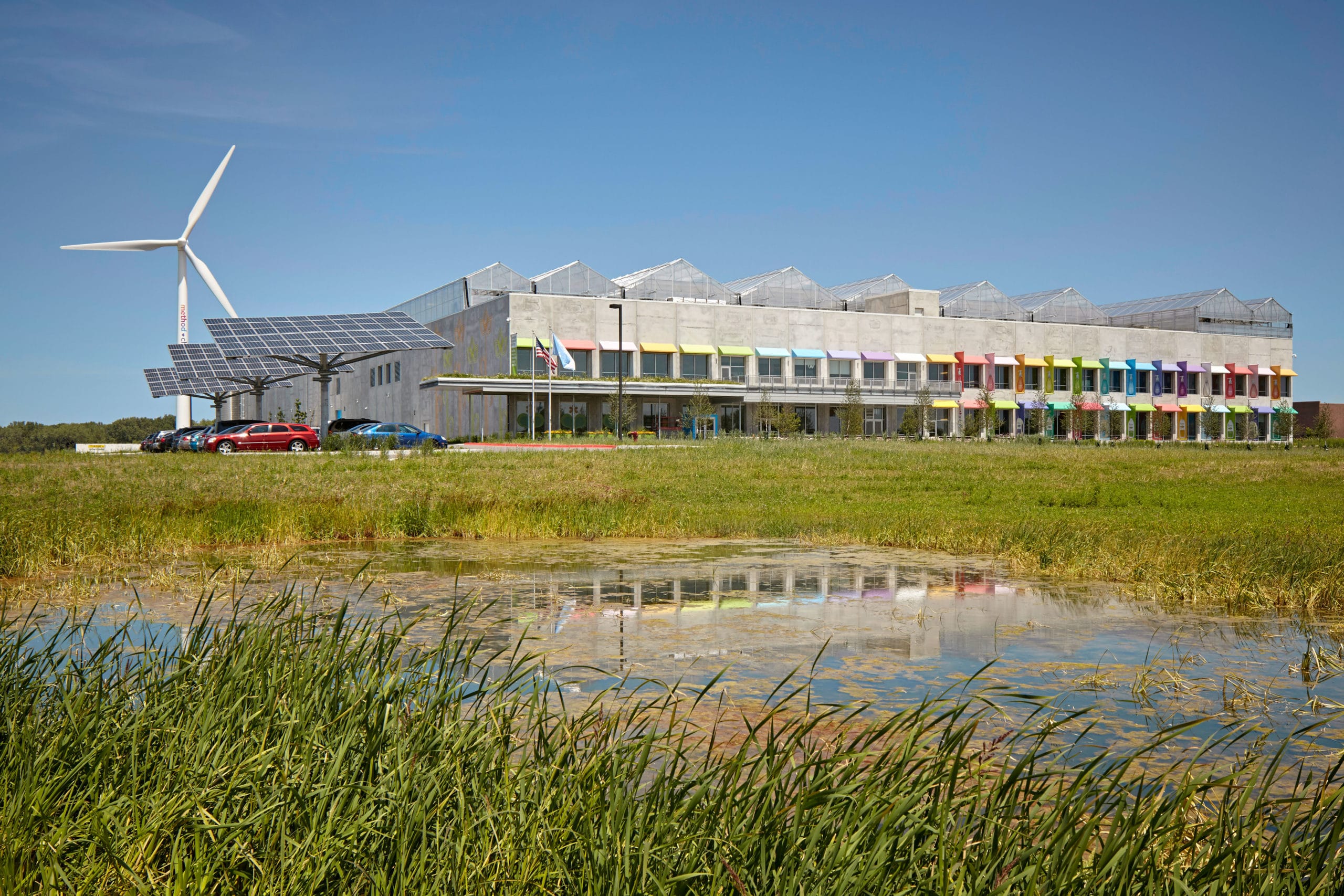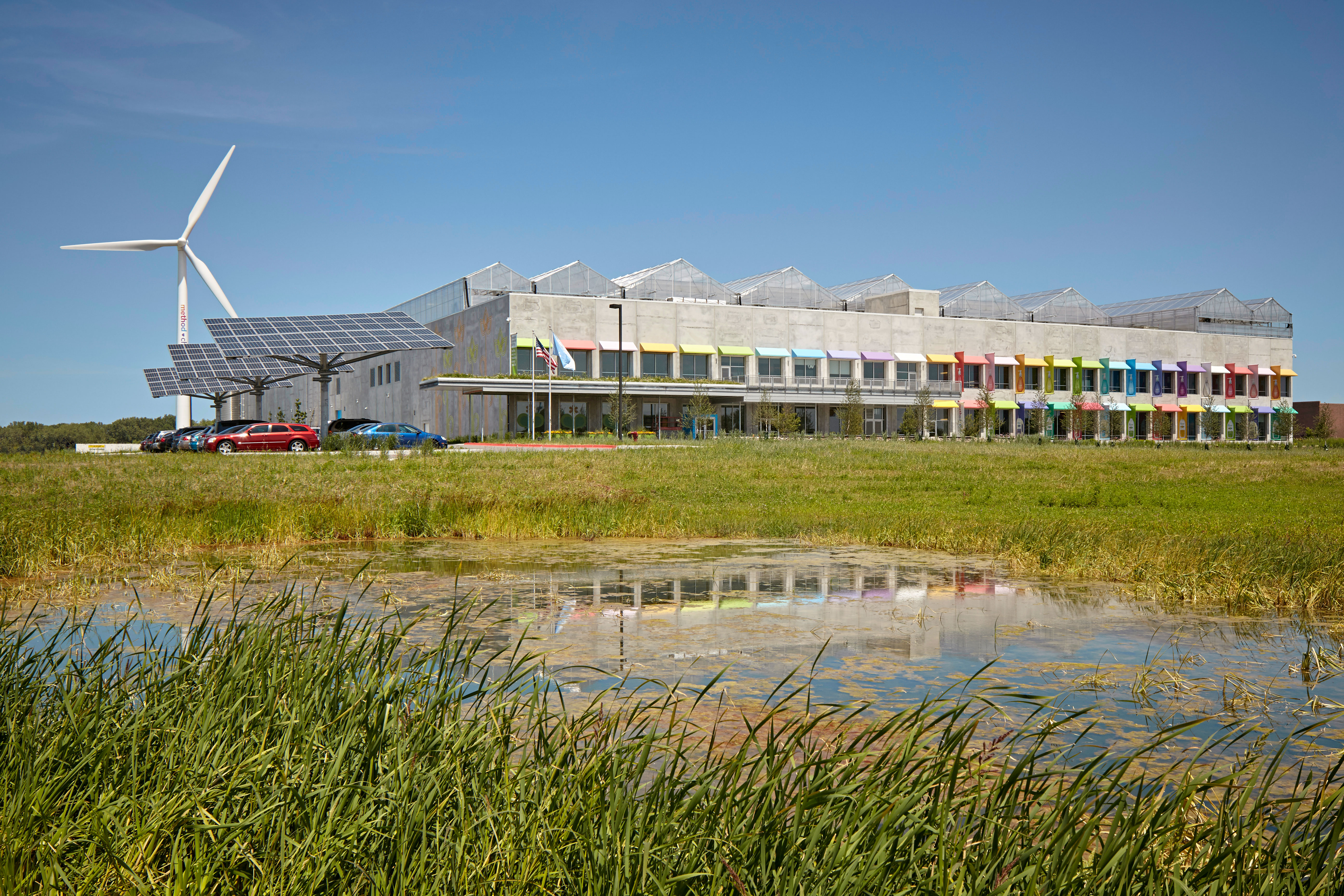
The 226-foot, 600 kW wind turbine sits onsite and was refurbished from former use in Germany. [Photo: Patsy McEnroe]
- SIZE:
157,660 square feet of floor area;
75,000 square feet of greenhouses
When Method broke ground on its new soap factory in Chicago in 2014, it wasn’t just looking for a place to fill bottles. It was looking to make a statement. After all, a company that not only produces cleaning products, but also promotes itself as producer of cleaner, safer, and more sustainable cleaning products has a high bar to hit. “It was important to Adam Lowry, the founder involved in the design process, to express the company’s environmental commitment physically in the building and site,” says Roger Schickedantz, of William McDonough + Partners, project manager for the build.
The site itself, in the Pullman Factory District, was the beating heart of manufacturing in 1880s Chicago, and it played a part in social change movements, from labor rights to civil rights. The Method factory, too, has furthered that history of change with its goal of being the first LEED Platinum manufacturing facility for consumer packaged goods.
Garry Embleton, vice president of operations and supply chain at Method, says for these reasons, it was crucial that the facility be welcoming to the community. “Our mission is to leave the world a better place than we found it, using business as a force for good,” he says.

Plentiful daylight fills the workspace at Method, and all building materials were evaluated based on their human impact. [Photo: Patsy McEnroe]
Together with a team of experts—from contractor Summit Design + Build to healthy materials consultant MBDC (using their Cradle to Cradle design format)—William McDonough + Partners brought Method’s vision to life. They called it the South Side Soapbox. “The vision for the Soapbox was to harness the control and capability of self-manufacturing by building the most flexible, eco-friendly, and socially beneficial factory in the world,” Embleton says.
To fulfill that promise, William McDonough + Partners chose this location, on a former brownfield in an economically struggling area of Chicago, to provide good, healthy jobs and be an inspiring example for the industry. And stay within a tight budget, of course. “Method insisted on a very tight budget and stuck to it. Yet at the same time they were very committed to the environmental goals. The building itself is extremely practical. A lot of visual interest was achieved with a minimal material palette by using color inside and out,” Schickedantz says.
To emphasize the company and the building’s transparency and connection to the community, the designers also included a wall of glass in the front, south facing, side of the facility. “People can easily look in and watch the operations,” Schickedantz says. “Method purposefully did not build a fence to keep people out, which would have been a conventional response in this South Chicago neighborhood. Likewise the awnings are colorful, using the colors in Method packaging, to be attractive to the community.”
With its proximity to Lake Michigan, and Method’s emphasis on protecting clean water, the site itself is designed as a water filtration system of sorts, retaining and releasing rainfall slowly and cleanly through swales, rain gardens, and a retention pond to avoid burdening the city’s storm water system or affecting the local watershed. Native plants were also incorporated into landscaping to avoid the need for wasteful irrigation. And water-conserving fixtures inside contribute to a 30% reduction in bathroom and kitchen water use.
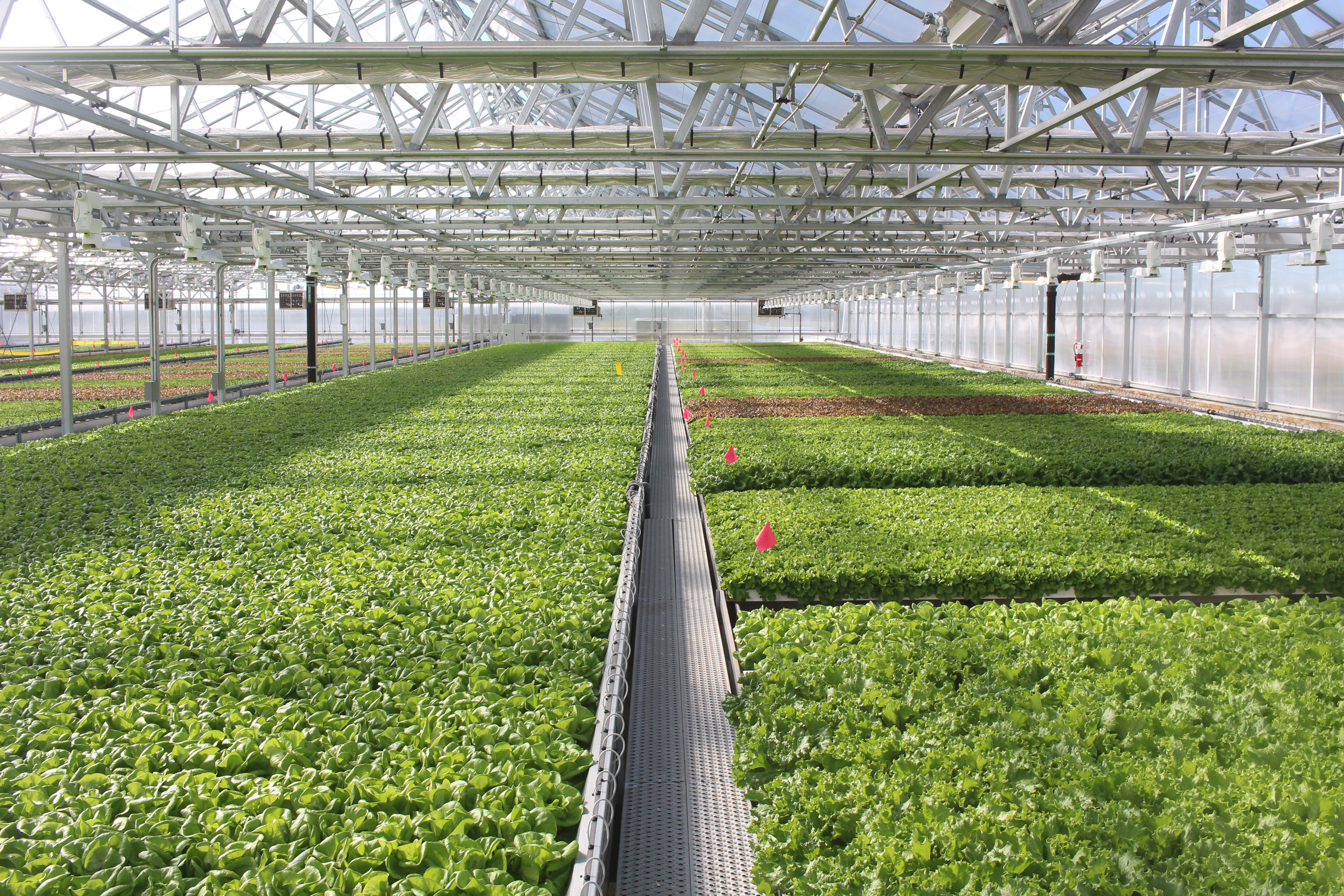
Gotham Greens leases the rooftop space of the Method factory where they produce vegetables and herbs for the local community. [Photo: McShane Fleming]

[Photo: Courtesy of Gotham Greens]
For employees, plentiful daylight finds its way into the building through a grid of skylights, while exterior banner shades and deciduous trees reduce heat gain in summer. All building materials, from paints to sealers to recycled content, were also evaluated for their impact on human health, ecology, and indoor air quality before use.
But perhaps the most stunning aspects of this new build are not part of the factory at all. The 226-foot, 600 kW wind turbine onsite, refurbished from former use in Germany, three solar PV tracking canopies in the parking lot, and solar hot water heating panels provide about one-third of the site’s total energy use, while the remainder is purchased from off-site renewable sources.
And to top it all off? There’s a greenhouse on the roof. Although greenhouses had appeared in William McDonough + Partners’ early concept designs, no one was sure if they could be incorporated into the final structure. That is, until Gotham Greens came into the picture.
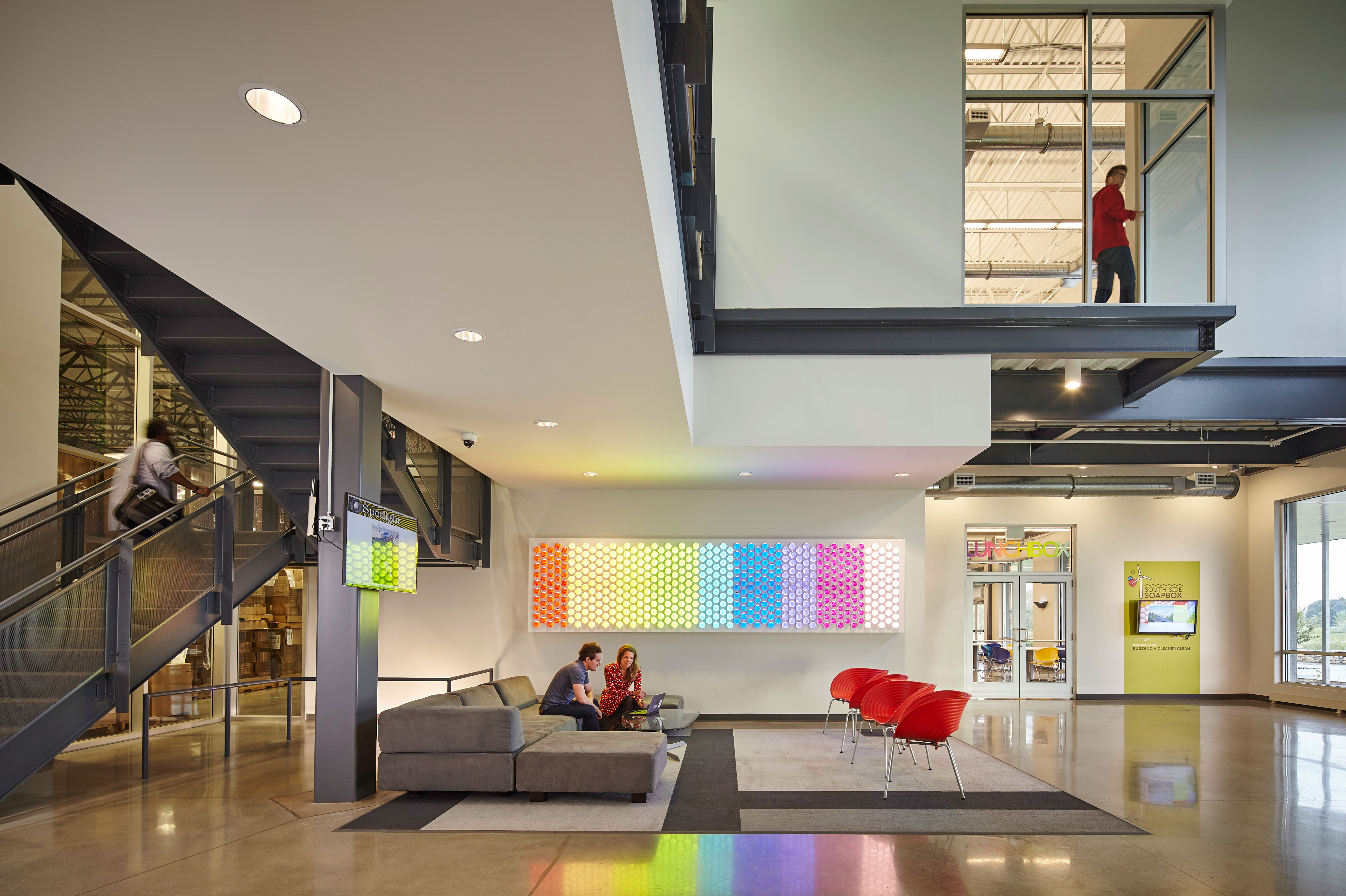
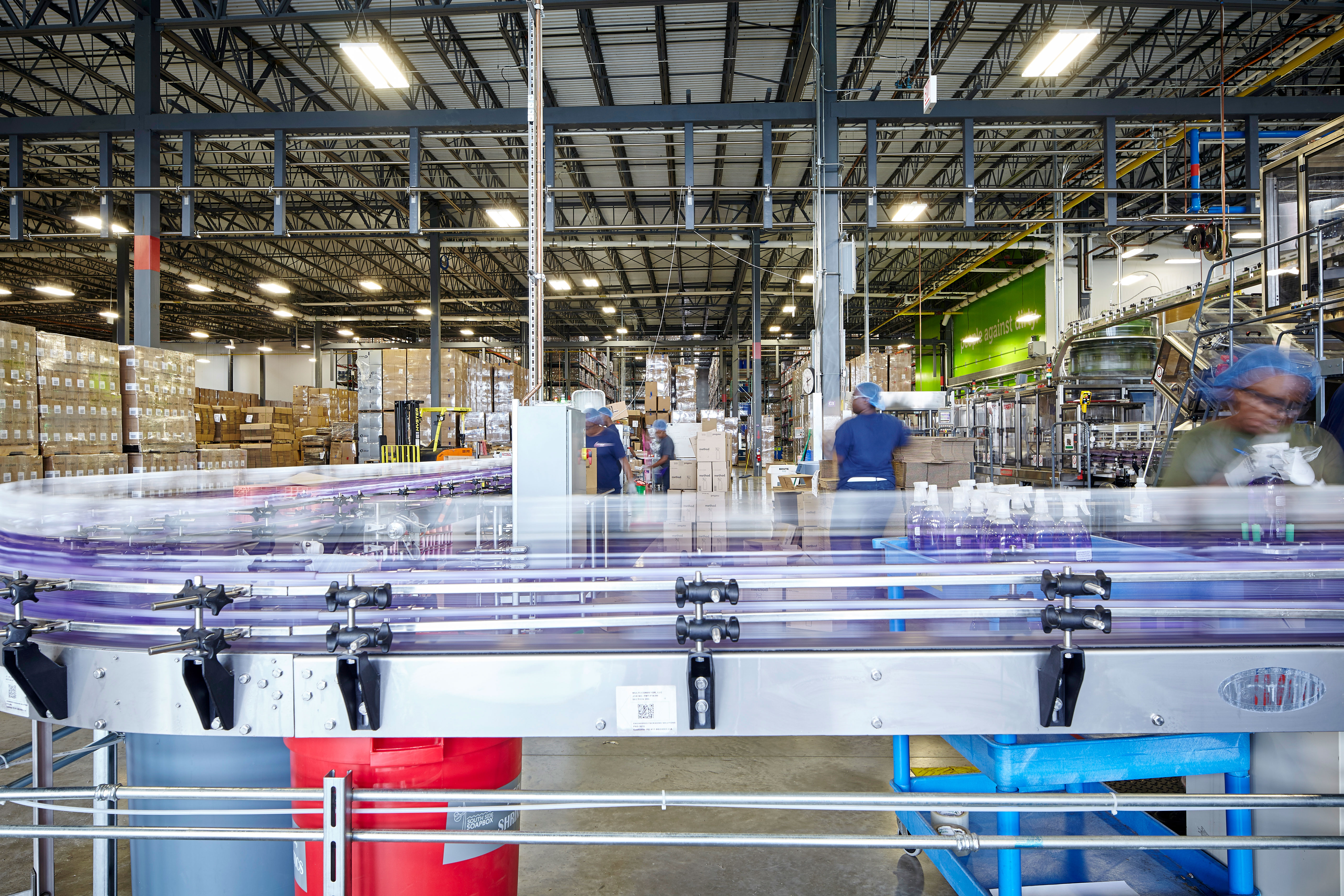
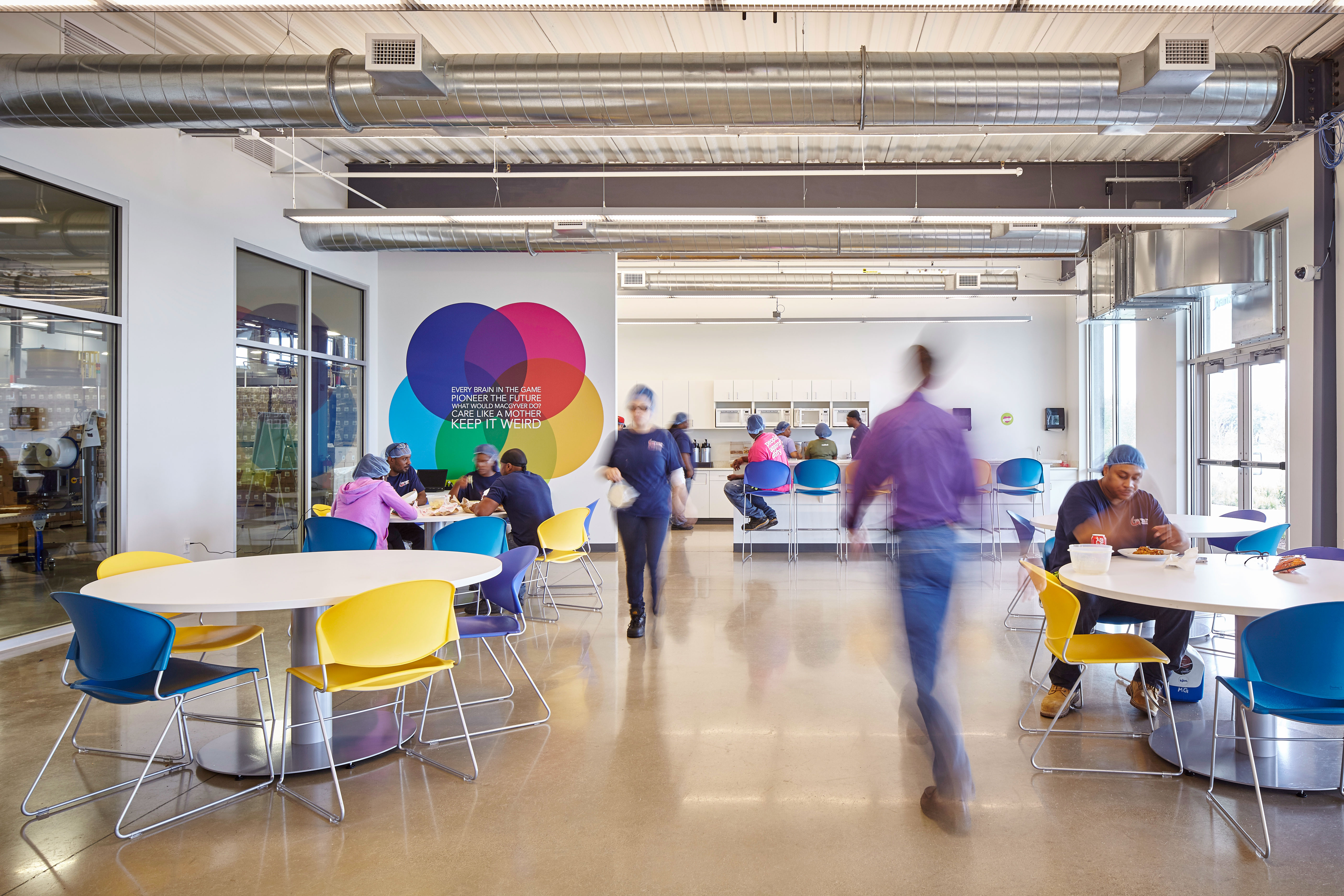
[Photos: Patsy McEnroe]
This pioneer in the field of urban agriculture and hyper-local greenhouse-grown produce became a key part of the new facility, leasing the rooftop space and designing, constructing, owning, and operating the hydroponic greenhouses there—which produce vegetables and herbs for the local community.
The addition has paid off. “The rooftop greenhouses, operated by Gotham Greens, are indicative of the commitment by Method and Gotham to provide a tangible benefit in a part of the city that was considered to be a food desert,” Schickedantz says.
In fact, nearly every aspect of the Soapbox has had a tangible impact on both the community and the manufacturing industry. In 2015, the project received LEED Platinum certification and has become a guiding light for many manufacturers looking to green their footprint. Embleton calls it “‘The Factory of the Future,’ a positive manifestation of urban revival, economic development, environmental and wellness education, and community building.” We couldn’t have said it better ourselves.

